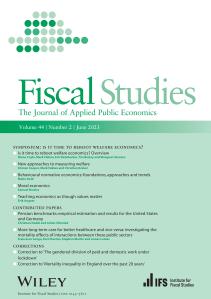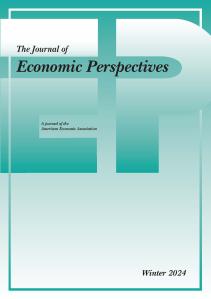I wrote a fortnight ago about how this Tory government has been rather more redistributive through the tax system than you might expect. They have cut direct taxes for those on modest earnings, while raising them for the rich. Their unexpectedly socialistic instincts have also characterised policy towards the 5.7 million or so members of the workforce who are employed by the state. Not by increasing their salaries overall to be sure, quite the reverse, but by increasing the pay of low earners while squeezing the highest earners, and squeezing them hard.
As my colleagues Jonathan Cribb and Laurence O’Brien showed in a recent paper, the 25th percentile of public sector earnings — that is, earnings a quarter of the way up the distribution — increased by 16 per cent in real terms between April 2007 and April 2023. Meanwhile, the 75th and 90th percentiles of public sector pay (the higher earners) fell by 8 per cent and 10 per cent respectively. In 2007 pay at the 75th percentile was 2.4 times higher than pay at the 25th percentile. By last year it was just 1.9 times higher. That is quite some compression. Pay in the private sector has also compressed — lower earners have done better than higher earners — though the differences are nothing like so stark.
Because men tend to earn more than women, this period has also seen a considerable closing of the gender pay gap within the public sector: average pay for men has fallen by more than 10 per cent, while for women it has grown by about 4 per cent.
Some of this will be down to changes in the composition of the workforce. If automation means that government is employing fewer staff doing low-skilled administrative work, as has happened in some parts of the civil service, that will have an effect. But most of what we see in the figures can be traced to deliberate policy decisions. Three times since 2010 there have been pay freezes for most of the public sector, but with exemptions for the lowest-paid. Meanwhile senior civil servants, doctors and experienced teachers have been singled out for especially harsh treatment.
The pattern is clear within different professions. Experienced teachers have lost out relative to newly trained ones. Classroom assistants have done better than both. In the NHS, consultants have seen the biggest pay cuts, followed by other doctors, then nurses. Some support grades have had modest pay increases. Senior civil servants have fared worse than their more junior colleagues.
Policy towards public service pensions has pointed in the same direction. These pensions remain far more generous than anything available in the private sector. But reforms since 2010 have tended to hit the highest-paid hardest, both by increasing their contributions and capping the value of their pensions. Some of the reforms have, albeit somewhat inadvertently, even been to the benefit of some lower-paid workers. Hence the closing in the pay gap will actually understate the extent to which overall rewards have been equalised.
Splendid, you might be thinking. A bit more “fairness” in the pay distribution is all to the good. If you’ve got limited resources, then obviously it’s best to focus them on the lowest-paid. An economist might make a slightly different argument. The government is almost the only employer of doctors and most teachers. There are, by definition, no private sector civil servants. Once you’ve served a few years in such specialist occupations in the public sector you’ve started to limit your outside options unless you’re willing to retrain and start again doing something else, or willing to move abroad. Government is exercising its market power on behalf of the taxpayer.
To some extent that has always been the case. Pay has been more compressed in the public sector than in the private since time immemorial. But that means that what has happened over the last 15 years has not been some form of correction, or approach towards the private sector norm. Quite the reverse: it has pulled public and private sectors even further apart.
Actually, there is another option. We could rely on international recruitment. We have become used to recruiting many of our doctors and nurses from overseas. Last week we learnt that more than a quarter of applicants for initial teacher training are from outside Europe. While acceptance rates are low overall, more than half of those accepted for training as physics teachers come from abroad. Not that we are anywhere close to recruiting as many as we need. Are these the first steps to a school system, like our health system, heavily dependent on recruiting from India, sub-Saharan Africa and elsewhere?
Naturally a government claiming to want to restrict numbers of immigrants doesn’t trumpet this as its policy, any more than it has trumpeted changes in visa rules to bring in tens of thousands of care workers. But that is the choice it is making. As with so much else over recent years, the treatment of public sector workers seems to have been determined year by year, crisis by crisis. No hint of a long-term strategy, no sense of direction. The consequence: strikes, staff shortages, large-scale immigration to paper over cracks, and a public realm that is increasingly struggling to deliver the services on which we all rely.
This article was first published in The Times, and is reproduced here with kind permission.









